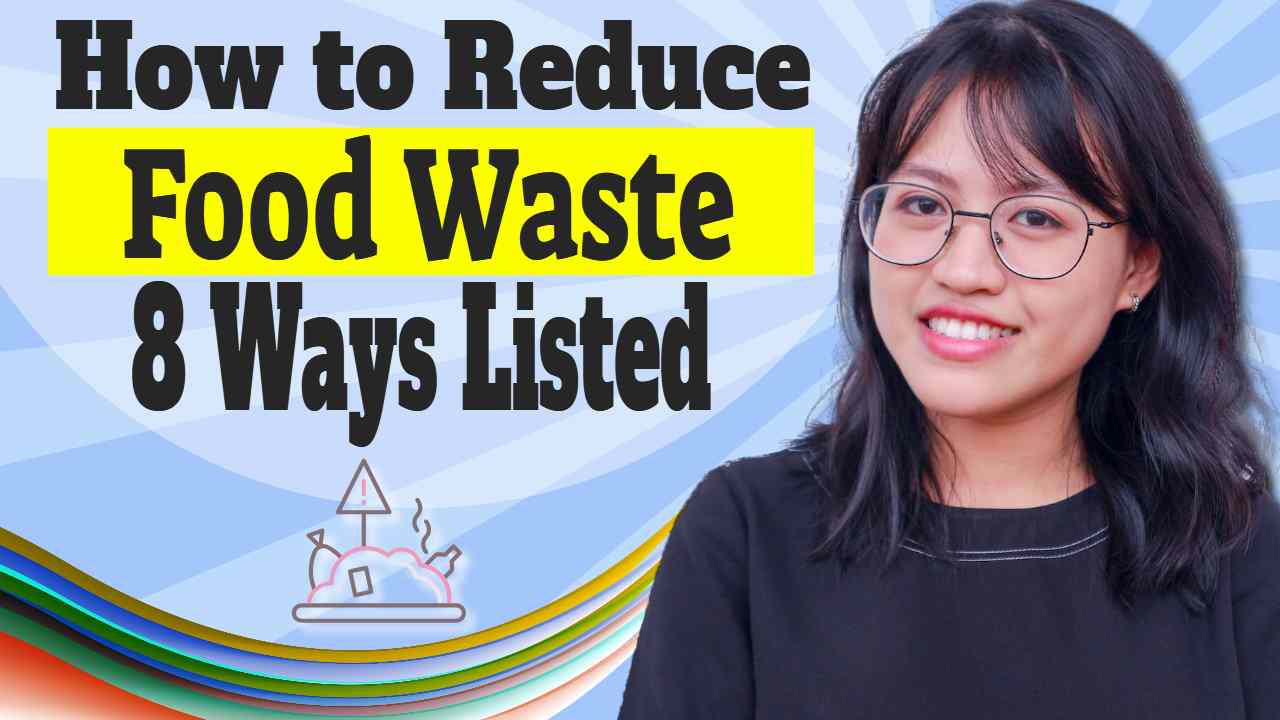If you're interested in reducing your food waste, there are a number of ways you can accomplish that goal. Some of the ways include reducing the amount of food you buy, getting rid of leftovers, and composting your food.
Food waste has become a significant issue in today's society. In point of fact, it is believed that as much as forty percent of all food that is produced in the United States is wasted.
Not only does this result in the loss of edible food that could have been distributed to those in need, but it also has a significant negative influence on the ecosystem. You are in luck because there are a few easy actions you can take to cut down on the amount of food waste you produce and help the environment.
1 - Plan your meals
The first thing you should do to reduce the amount of food you throw away is to plan your meals. This will ensure that you only purchase the necessary ingredients and prevent you from purchasing an excessive amount.
Before you head out to the store for groceries, it is essential that you double check the contents of both your refrigerator and your pantry. Because of this, you won't have to worry about buying the same thing twice and may cut down on the amount of food that goes to waste.
2 - Shop often
Shopping as often as you can is another strategy for reducing the amount of food that is thrown away. When you buy in bulk, not only may you save money on the food you require, but you also help cut down on the amount of trash generated from its packaging. You may buy enough to last for a number of meals, making this an excellent method for getting the most value for your money.
3 - Make use of any leftovers
In addition to going grocery shopping in bulk, another way to cut down on food waste is to make use of any leftovers. This can be as easy as putting together a stew or soup with the vegetables and meat that you have left over. You can also make a frittata or a quiche with the cheese and vegetables that are left over from another dish.
5 - Invest in quality food containers
If you want to cut food waste, invest in quality food containers. They will save you money and help protect the planet. You can choose from plastic, glass, or stainless steel to make your food storage more eco-friendly.
Investing in high-quality containers can also help you avoid the hassle of buying extra packaging. Most of these products are durable and portable. Plus, you can keep leftovers fresher longer with airtight plastic containers.
Stainless steel is a great material to use in the fridge or freezer. It's also non-porous, so it won't absorb flavors or bacteria. Many stainless steel containers are painted, so you should check to see if they're pure.
The best kitchen containers have a tight-fitting lid and a handle. Make sure they're wide enough to hold a lot of food. Ideally, the containers are dishwasher-safe.
5 - Buy fruits and vegetables at varying stages of ripeness
Purchasing fruits and vegetables at different stages of ripeness has been shown to reduce waste. This may be as simple as making a shorter commute to your local supermarket or picking up your produce at the farmers market. In the best cases, you'll have a bumper crop to munch on.
Aside from the requisite refrigeration, the easiest way to make a fruit or vegetable last longer is to freeze it. Freezing food will avert the usual splatters that plague fresh foods.
Likewise, using the correct humidity and temperature settings will ensure that you're left with some tasty treats. If you're planning on making your own meals, a freezer can save you a lot of headaches. For instance, if you're in a rush, you'll be able to use frozen veggies to make a quick and easy soup stock.
6 - Write down and remember the types of foods that go bad
One of the easiest ways to avoid throwing out food is to write down the types of foods that go bad quickly and learn this list. This helps you identify the ones that you should not buy and the ones that you can save for later.
Most people don't realize just how much food they waste every day. It's a shame. However, reducing your food waste could have positive impacts on your budget, your environment, and your health.
The US Department of Agriculture (USDA) says that we throw away roughly $1,500 a year on produce, and more than 2 percent of all household waste ends up in landfills.
Food waste happens at every step of the supply chain, from the farm to your plate. Some of the most common culprits include dairy products, meats, fruits and vegetables.
7 - Create a compost heap
A compost heap is a great way to reduce your food waste. This nutrient-rich material can be used for a number of different purposes. It can also help improve the soil for plants.
Food leftovers can be easily transformed into nutrient-dense soil for your plant by using a process called composting. It is also an excellent method for lowering the amount of food that is thrown out and ending up in landfills.
The process of composting involves bacteria, fungi, and other microorganisms. These organisms break down organic matter in the pile by aerobic respiration.
Composting materials include grass clippings, leaves, kitchen scraps, and yard trimmings. If you use paper products such as egg cartons, you should tear them up before adding them to the pile.
When you start a compost heap, it is important to ensure that it is well-aerated. You can do this by turning the pile with a pitchfork or by introducing air into the pile.
The temperature of the compost pile plays a major role in the decomposition of the pile. Cold temperatures slow down the microbial action, and warm temperatures speed up it.
8 - Donate food
Donating food can help reduce the amount of waste and food insecurity that occurs in our nation. The Food Recovery Network (FRN) works with food banks and hunger relief agencies across the country to provide food that would otherwise be thrown away.
The Food Recovery Network aims to eliminate hunger and increase food security in communities around the country. It provides education and skills training to help people learn how to make the most of their food donations.
In addition to feeding the hungry, donating good quality food also helps reduce the amount of food that goes to waste. Some local food pantries and banks accept a variety of items, including canned goods, fresh fruit, and unspoiled perishable foods.
Many large companies and farms give their unwanted food to food banks. This can be a cost-effective way to help those in need.
8 Ways to Reduce Food Waste - Conclusion
You can benefit the environment while also cutting down on the amount of food you throw away if you follow these easy steps. This will not only help you lessen the impact that you have on the environment, but it will also help you save money on your grocery bill. When you go grocery shopping the next time, make sure you remember to plan ahead, buy only what you know you need, make use of any leftovers, and compost any food waste.
Minimising the amount of food that is thrown out is an essential action that we can take to assist in the preservation of our environment and to save money.
We are able to make a difference in the amount of food that is wasted if we are conscientious about the food that we purchase, if we store and prepare food in the appropriate manner, and if we donate or compost food.
This way we can all do our share to contribute to the reduction of food waste in our communities with a little bit of effort.


